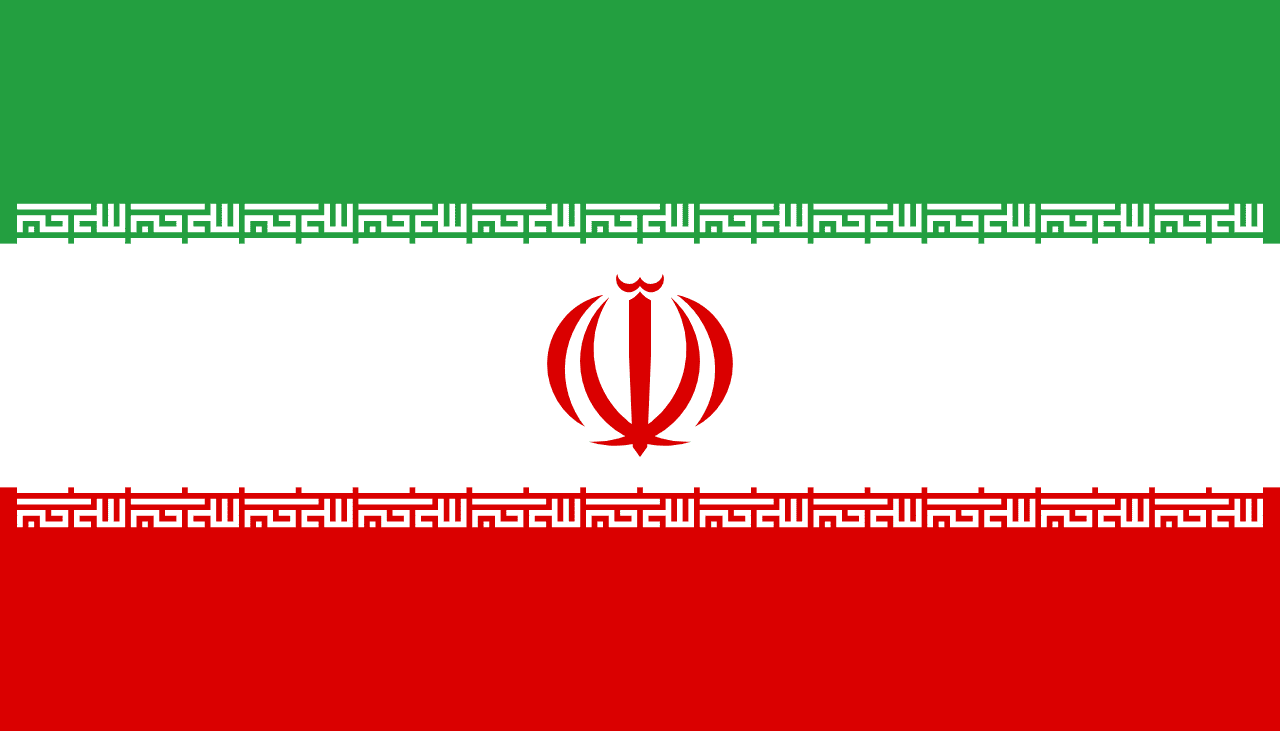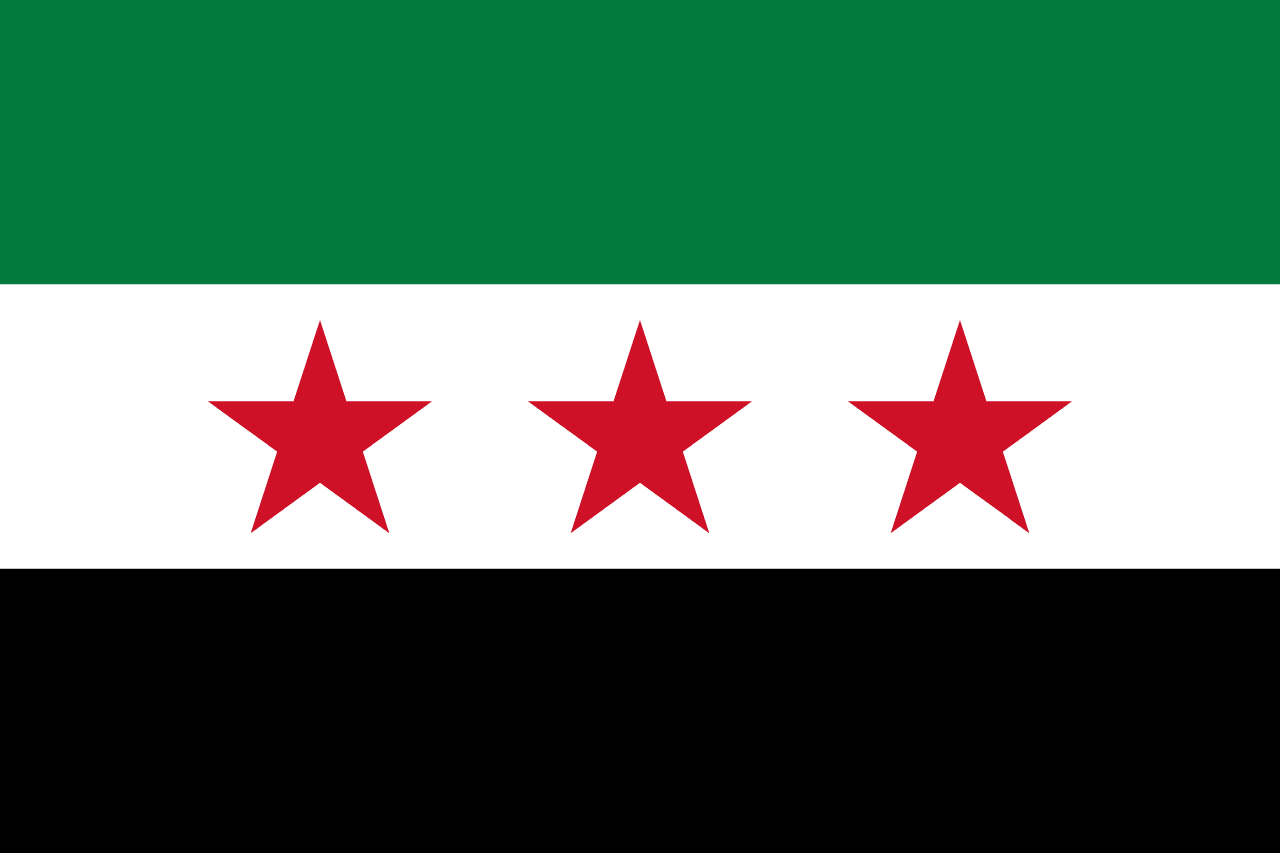Kuwait Flag Meaning
Three horizontal stripes of green, white, and red with a black trapezoid on the hoist side, representing Kuwait's position in the Arab world and its transformation from pearl diving to oil wealth in the Arabian Gulf.
- Continent
- Asia
- Adopted
- 1961
- Ratio
- 1:2
- Colors
- black, white, red, green

Symbolism
Black Trapezoid: Represents the defeat of Kuwait's enemies and the country's determination to defend its sovereignty. The trapezoid shape symbolizes Kuwait's unique identity within the broader Arab world.
Green Stripe: Symbolizes the fertile land and prosperity of Kuwait, representing hope for the future and the country's agricultural potential despite its desert environment.
White Stripe: Represents the pure intentions and peaceful nature of Kuwait, symbolizing the country's noble deeds and its role as a mediator and humanitarian contributor in the region.
Red Stripe: Symbolizes the blood of Kuwait's enemies spilled on the battlefield, representing the country's readiness to defend its independence and sovereignty against any aggression.
Pan-Arab Colors: The black, white, green, and red colors connect Kuwait to the broader Arab nationalist movement and represent unity with other Arab nations while maintaining distinct Kuwaiti identity.
History
- 1756: The Al Sabah dynasty was established in Kuwait, founding the ruling family that continues to govern the country today and establishing Kuwait's unique political identity in the Gulf region.
- 1899: Kuwait became a British protectorate under the Anglo-Kuwaiti Agreement, providing protection from Ottoman expansion while maintaining internal autonomy under Al Sabah rule.
- 1938: Oil was discovered in Kuwait, beginning the transformation from a pearl diving and trading economy to one of the world's wealthiest nations per capita.
- June 19, 1961: Kuwait gained independence from Britain and adopted the current flag, becoming a sovereign nation with the distinctive Pan-Arab design reflecting its place in the Arab world.
- August 2, 1990: Iraq invaded Kuwait, leading to the seven-month occupation that ended with the Gulf War liberation in 1991, during which the Kuwaiti flag became a symbol of resistance and liberation.
- February 26, 1991: Kuwait was liberated by coalition forces during the Gulf War, and the flag was raised again over Kuwait City, symbolizing the restoration of sovereignty and independence.
- 1991-Present: Kuwait rebuilt after the Gulf War and has used its oil wealth for development and regional influence, with the flag representing the country's resilience and continued prosperity.
Trivia
- Kuwait's flag features one of the most distinctive geometric designs among Arab flags, with the black trapezoid making it easily recognizable from other Pan-Arab tricolors.
- The flag represents one of the world's wealthiest countries per capita, with oil reserves that have funded extensive social services and infrastructure development.
- Kuwait was the first Gulf state to have an elected parliament, and the flag represents this unique tradition of constitutional monarchy and democratic participation in the region.
- During the 1990 Iraqi occupation, displaying the Kuwaiti flag was forbidden, making it a powerful symbol of resistance and national identity during the seven-month occupation.
- The flag appears on Kuwaiti dinar banknotes, which are among the world's highest-valued currency units, reflecting the country's oil wealth and economic stability.
- Kuwait's National Day is celebrated on February 25, and Liberation Day on February 26, with massive flag displays commemorating independence and Gulf War liberation.
- The flag represents a country that is smaller than New Jersey but has about 10% of the world's proven oil reserves, highlighting the concentration of wealth and strategic importance.
- Kuwait was historically known for pearl diving before oil, and the flag's maritime symbolism reflects this connection to the Arabian Gulf and traditional sea-based economy.
- The flag flies over Kuwait Towers, the iconic water towers that have become symbols of modern Kuwait and the country's architectural modernization using oil wealth.
- Kuwait is one of the world's most generous donors of foreign aid relative to GDP, and the flag appears at humanitarian missions reflecting the country's charitable traditions.
- The Kuwait Investment Authority, one of the world's largest sovereign wealth funds, operates globally under the flag, representing Kuwait's international financial influence.
- Traditional Kuwaiti dhow boats often display the flag during cultural festivals, connecting modern national identity to maritime heritage and Gulf trading traditions.
- The flag represents a country where expatriates make up about 70% of the population, creating a unique multicultural society under Kuwaiti sovereignty.
- Kuwait City's modern skyline, dominated by banking and finance towers, often features flag displays representing the country's role as a regional financial center.
- The flag appears prominently during the annual Hala February festival, celebrating Kuwaiti culture and the country's liberation and independence anniversaries.
Related Countries

Bahrain
Asia
A white band on the hoist side separated from a red field by a serrated line with five triangular points, representing peace and the five pillars of Islam, while the red represents the Kharijite sect of Islam that historically dominated the region.

Iraq
Asia
Three horizontal stripes of red, white, and black (Pan-Arab colors) with 'Allahu Akbar' (God is Greatest) written in green Arabic Kufic script across the white stripe, representing Arab unity, Islamic faith, and Iraqi sovereignty.

Qatar
Asia
A national flag divided vertically with a broad white band on the hoist and a larger maroon field separated by nine white serrated points. Qatar’s unique flag ratio and color reflect its history and independence.

Saudi Arabia
Asia
A green field with the Islamic declaration of faith (shahada) in white above a horizontal sword. The design emphasizes Islam as the foundation of the state.

Iran
Asia
Three horizontal stripes of green, white, and red with a stylized emblem in the center and repeated 'Allahu Akbar' text along the borders, representing the Islamic Republic of Iran and the principles of the 1979 Islamic Revolution.

Syria
Asia
Three horizontal stripes of red, white, and black with two green five-pointed stars on the white stripe, representing the Pan-Arab colors of liberation struggles, the Hashemite flag heritage, and the Ba'ath Party's Arab socialist ideology that has governed Syria since 1963.